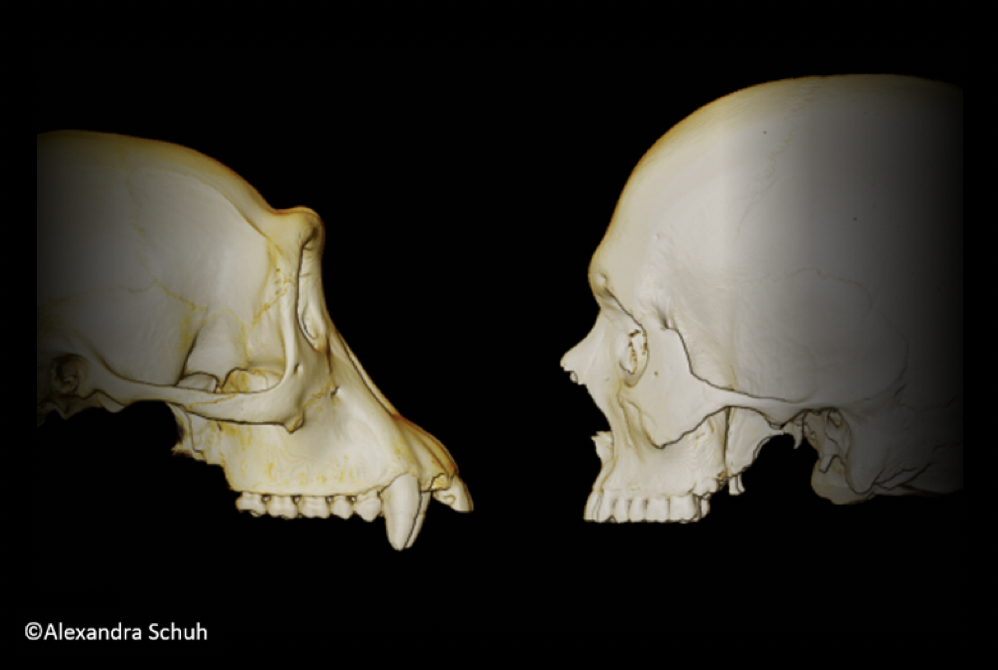Alexandra Schuh, Bénéficiaire d’une subvention de recherche en 2022, Yann Heuzé, Philipp Gunz, Michael Berthaume, Colin Shaw, Jean-Jacques Hublin, Sarah Freidline
Abstract
Midfacial morphology varies between hominoids, in particular between great apes and humans for which the face is small and retracted. The underlying developmental processes for these morphological differences are still largely unknown. Here we investigate the cellular mechanism of maxillary development (bone modelling), and how potential changes in this process may have shaped facial evolution. We analysed cross-sectional developmental series of gibbons, orangutans, gorillas, chimpanzees and present-day humans (N=183). Individuals were organized into five age groups according to their dental development. To visualize each species’ bone modelling pattern and corresponding morphology during ontogeny, maps based on microscopic data were mapped onto species-specific age group average shapes obtained using geometric morphometrics. The amount of bone resorption was quantified and compared between species. Great apes share a highly similar bone modelling pattern, whereas gibbons have a distinctive resorption pattern. This suggests a change in cellular activity on the hominid branch. Humans possess most of the great ape pattern, but bone resorption is high in the canine area from birth on, suggesting a key role of canine reduction in facial evolution. We also observed that humans have high levels of bone resorption during childhood, a feature not shared with other apes.
Lire l’article, dans The Royal Society Publishing
Appréhender les mécanismes ontogénétiques chez les primates actuels permet de mieux comprendre la variation observée chez les fossiles, ainsi que de mettre en avant des spécificités développementales propres à chaque espèce. Cette étude portant sur les mécanismes cellulaires de la croissance de la face chez les hominoïdés (gibbons, chimpanzés, gorilles, orangs-outans et humains), financée par une bourse de recherche de la fondation Fyssen, conduite dans le cadre d’un post doctorat au sein du laboratoire PACEA (Université de Bordeaux) et publiée dans Proceedings of the Royal Society B, a permis de mettre en avant des spécificités de l’ontogenèse propres à notre espèce Homo sapiens ainsi que de discuter des mécanismes à l’œuvre dans l’évolution morphologique faciale.

Alexandra Schuh est chercheuse en post doctorat à l’institut Max Planck d’Anthropologie Évolutionnaire de Leipzig en Allemagne au sein du département Human Origins. Titulaire d’une thèse en Biologie, sa recherche porte sur l’évolution de la face humaine, ainsi que sur les mécanismes ontogénétiques qui sous-tendent la variation morphologique crânienne.
Pendant sa thèse, elle s’est spécialisée dans l’étude des processus cellulaires de la croissance osseuse qui renseignent sur les mécanismes à l’œuvre dans l’évolution morphologique.
